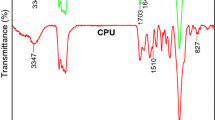Summary
Since their introduction in 1963, silicone resin emulsion paints (SREP*) have developed into a modern facade coating system. Silicone resin emulsion paints combine the good properties of mineral and synthetic resin-bound facade-coating systems in an ideal way.
The strength of the silicone resin within the paint microstructure stems from its three-dimensionally cross-linked, modified-quartz structure, the silicone resin network. High-resolution SEM (scanning electron microscopy) demonstrates how silicone resins form nanoscale network structures that can envelop fillers and perfectly line pores without sealing them. The silicone resin network strengthens the pores and renders them water-repellent. The high affinity of the silicone resin for polar, mineral fillers, even for calcium carbonate substrates, results from its unique molecular structure of inorganic/organic hybrid nature.
Résumé
Depuis leur introduction en 1963, les peintures siloxanes sont devenues un des revêtements de façades les plus modernes. Les peintures siloxanes combinent de façon idéale les propriétés des produits à base de liant minéral et des produits à base de liant organique.
La force de la résine siloxane à l’intérieur de la microstructure du film de peinture résulte d’une réticulation tridimensionnelle d’une résine siloxane similaire à une structure quartz modifiée. La microscopie à balayage à haute résolution démontre comment les résines siloxanes forment une structure de quelques nanomètres, qui va envelopper les charges et enrober les pores sans les boucher. La résine siloxane va donc renforcer les pores et les hydrofuger. L’importante affinité de la résine siloxane pour les charges minérales polaires, y-compris de type calcium-carbonate, est le résulat d’une structure moléculaire unique de nature hybride organique/inorganique.
Zusammenfassung
Seit ihrer Markteinführung im Jahre 1963 sind die Siliconharzfarben zu einer modernen Fassadenbeschichtung weiterentwickelt worden. Siliconharzfarben vereinen in idealer Weise die guten Eigenschaften von Mineralfarben und Kunstharz-gebundenen Fassadenbeschichtungen.
Die Stärke des Siliconharzes im Mikrogefüge von Farben resultiert aus seiner dreidimensional vernetzten, modifizierten Quarz-Struktur, dem Siliconharznetzwerk Hochauflösende Rasterelektronenmikroskopie (REM) zeigt die Ausbildung nanoskaliger Netzwerkstrukturen, die Füllstoffe umhüllen und in perfekter Weise Poren auskleiden ohne sie zu verschliessen. Das Siliconharznetzwerk verstärkt die Poren und rüstet sie wasserabweisend aus. Die hohe Affinität des Siliconharzes zu polaren, mineralischen Substraten -einschliesslich Calciumcarbonat-, resultiert aus seiner einzigartigen molekularen Struktur, dem anorganisch organischen Hybridcharakter.
Similar content being viewed by others
References
Pfeiffer J and J Weis, ‘Silicone, Multitalente aus Sand — Eigenschaften und Anwendungen’ CLB,Silicon-Chemie,53, (2), 128–35, 2002
Mayer H, ‘The chemistry and properties of silicone resins’,Aqueous Silicone-resin Coating Systems for Exteriors,522, 63–80, (ed) W Schulze, Renningen-Malmsheim, 1997
Lork A, I König-Lumer and H Mayer, ‘Fine network shows strength of character’,ECJ,12, 14–21, 2002
Lork A, ‘Silicone resin emulsion paint: The perfect all-round facade protection’, Congress Paper of the 17th SLF Congress, ‘Future Trends in Coatings Technology’, 375–86, 7th to 9th September, Stockholm
Pfeiffer J and J Weis, ‘Silicone, Multitalente aus Sand — Eigenschaften und Anwendungen’ CLB,Silicon-Chemie,53, (1), 84–9, 2002
Tomanek A,Silicones & Industry, (1st edition), 1–173, Carl Hanser Verlag, Munich, 1990
Schwartz M and R Baumstark,Water Based Acrylates for Decorative Coatings, (1st edition), 1–286, Vincentz, Hannover, 2001
Greene J, D Haeussler and B Berglund,(SREP) Silicone Resin Emulsion Paint — Applications and References, PCI, 30–6, September 2002
Lork A, I König-Lumer and H Mayer, ‘Silicone resin networks: The structure determines the effect’,ECJ,04, 132–7, 2003
Snethlage R, ‘Steinkonservierung 1979–1983’,Arbeitshefte des Bayerischen Landesamtes für Denkmalpflege,22, 9–143, München, 1984
Wypych G,Handbook of Fillers, (2nd edition), 1–890, Plastics Design Library, Toronto, 1999
Moreland J E, ‘Silica fillers, extenders, and reinforcements’,Handbook of Fillers and Reinforcements for Plastics, (eds) H S Katz and J V Milewski, 136–159, Van Nostrand Reinhold, New York, 1978
Author information
Authors and Affiliations
Rights and permissions
About this article
Cite this article
Lork, A. Silicone resin emulsion coatings: The strength profile of the silicone resin network in paint microstructures. Surface Coatings International Part B: Coatings Transactions 87, 41–46 (2004). https://doi.org/10.1007/BF02699563
Issue Date:
DOI: https://doi.org/10.1007/BF02699563




